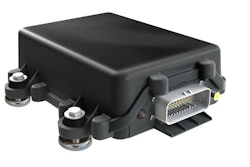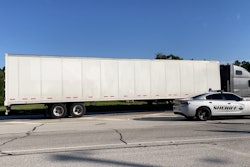Transportation management software (TMS) systems combine a lot of features in one package: order entry, load planning, driver management, accounting and reporting to name a few. To say the technology is robust would be an understatement.
People that use TMS systems include owners and executives down to front-line managers and clerks. Despite the many rich and dynamic features in these systems, getting to the information you need is not always quick and easy. Users often navigate through multiple screens full of function icons and data grids.
TMS systems have a steep learning curve and implementation requires lots of IT time, resources and training.
Compare this TMS user experience to that of a smartphone or tablet device. These “smart” devices are superior for cutting through the clutter of transactions. When a push notification appears for important calendar items, payments due, changes to flight schedules, new e-mails, and many other events, you immediately know what to do.
By touching the push notification you go directly into an app and are automatically logged into a server. The information presented to you is concise and clear. The workflow is simple and intuitive.
This type of portable, consumer-style workflow is difficult to replicate in a TMS environment. Robust functionality is not associated with a smartphone app or web page. Imagine trying to make the cockpit of the Space Shuttle as consumer friendly as a family minivan.
Despite these odds, U.S. Xpress Enterprises, the nation’s second largest privately owned truckload carrier, is pioneering a strategy to make TMS as consumer friendly as possible.
The company transformed its legacy TMS system, called XPM, into a cutting-edge fleet management platform. Today’s XPM has a centralized workflow structure for all areas of operations that include load planning, customer service and driver management.
U.S. Xpress extended XPM’s on-site desktop applications for planning, scheduling and fleet management into a seamlessly integrated web interface. Through this web interface, users do not have to go from one application, or location in XPM, to the next to lookup orders, track shipments, check load confirmations, etc.
The web interface makes everything that is relevant to their jobs available on one screen, says Bruce Odem, distributed application Manager of U.S. Xpress.
The XPM web platform is not to be confused with a web page. The user does not need to manually refresh the information on the page or click “enter” to send information back to the server. Two-way communication takes place automatically, in real time, regardless of the browser or version used on a device.
U.S. Xpress uses a service developed by a Silicon Valley-based company called Kaazing to enable its rapid browser communication. From a technical perspective, Kaazing uses HTML-5 Web sockets to create fast, secure and stable Web communications. With this HTML-5 architecture, the full functionality of the XPM web platform is compatible with any computing device and web browser.
“Kaazing allows our internal applications to receive and deliver messages, information, activities, and third-party data through our web application in real-time,” explains Odum. “The beauty of having two-way communication is that we can write very robust apps going down to the web level.”
With the services of Kaazing, Odum says U.S. Xpress is rapidly advancing towards its desired future state of a “push-type” architecture where employees are fed what they need to do during the day in a highly visual, workflow fashion.
“When you login we will tell you what you need to do,” he says.
U.S. Xpress has already arrived at this future state for its customer service and load planning functions. It recently developed a map-driven application that presents information in a very visual, intuitive way to users, including push notifications.
Planners, for instance, are able to visually manage loads and fleets of trucks in an interactive map of the country. They see loads and capacity in their state zones as well as other planners and their territories. If a planner needs to hand off a load to another planner the interaction happens instantly and is depicted on the zoned map of the U.S.
A planner can also click on any truck on the map and see details of the truck’s information including driver, schedules, load detailed information, driving routes, maintenance schedule and more.
Planners and customer service representatives use dual monitors in the office. On their left screen they may use the traditional, grid-type Windows planning screen of XPM. On the right screen is the integrated, visual map application. Any transactions made in the grid on the left are immediately represented on the map on the right.
Besides making workers more productive inside and outside of the office with its unified web platform, U.S. Xpress has reduced software training time by more than half. When it hires a new fleet manager, it no longer has to spend weeks training how to use its core legacy systems. That time is now spent teaching about how to be a fleet manager, Odum says.












